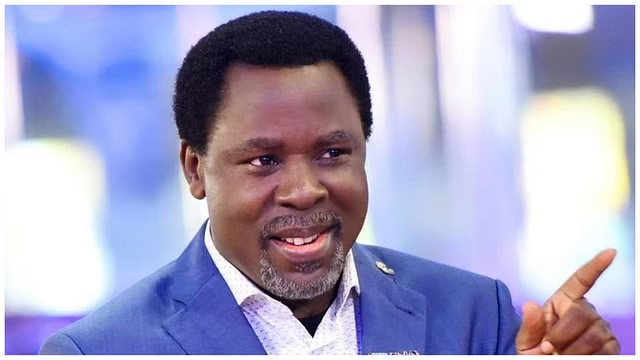
Recent articles on this blog have considered the way that the institution we know as Holy Trinity Brompton has come to exercise a dominant position within the Church of England. The importance that it possesses is not only financial and structural; the overall HTB culture appears to be what the typical non-Church member, the person in the street, regards as true of all Christians in Britain. Increasingly Christians have come to be understood by ordinary folk to hold extremely reactionary attitudes on sexual morality issues. Also, their musical preferences seem to an older generation, whether church members or not, to have far more in common to the offerings of a night club. This new music has eclipsed the traditional hymnody that used to bind the whole of British society together in something like a common religious culture. Those of us who are outside the orbit of HTB may sometimes also be made to feel that we have no part to play in the Church’s future. The moderate liberal-catholic perspectives which were in the ascendant in the C/E until 20 or 30 years ago, are now considered in many places to be old-fashioned and of little relevance to a younger generation.
The articles by Hattie Calbus may have alerted some SC readers to the thought that the HTB universe and its power should and can be challenged. Any concentration of so much power operating within a single institution, the C/E, is likely to have the potential for becoming corrupted. The wise words of Lord Acton about power come to mind. All dominant cliques in any sphere of life have this potential. Our minds are currently being drawn to the immense power of the Post Office management over their employees and the way that the voices of the powerless were never heard. Those of us who are uneasy at the extent and nature of the HTB’s power might want to understand better what might be going on in the somewhat secretive universe that it occupies. The tools with which to make sense, psychologically and theologically speaking, of what is going on within that world are not readily available. This powerful attraction of charismatic evangelicalism is frankly puzzling to those of us of a more traditional approach to the Christian faith and to the Church of England in particular.
In recent weeks I have been helped, through reading a book, to go further into this mysterious culture, which can be best summed up in the two words, charismatic evangelicalism. One of the commenters on this blog drew our attention to this newish published account of the culture shared by so many congregations that look to HTB for inspiration and guidance. The book is entitled Immanuel. The book successfully draws together and describes the life and culture of two charismatic congregations. Both, one in Lagos Nigeria and one in Winchester UK, are expressions of the charismatic evangelical tradition which has come to dominate Christian practice right across the world. There are of course enormous differences of style between the two congregations, but each would see itself as drawing from the same theological and spiritual well-springs. The main focus of this fascinating book is to describe how a group of very young members of the Winchester house church found their way to becoming members of the Lagos ministry under the leadership of the powerful founder, TB Joshua. The book helps us to understand the extraordinary cultural and theological adjustments that needed to be made by these charismatic pilgrims. Their efforts to be faithful to the Nigerian expression of this culture involved a great deal of pain, experiences of humiliation and other forms of exploitation that we associate with the cults. The author of Immanuel, Matthew McNaught, had been a fellow member of the Winchester house church and is thus able to present sympathetically the motivations and background of these members of his old Christian group, as they pursued a path which would seek to become part of one of the highest expressions of Christian power available. TB Joshua evidently was a powerful presence, and he possessed a range of gifts that we lump together in the word charismatic. Claims of prophetic gifts, deliverance, second sight and healing were communicated to this group of idealistic young people through the medium of video tapes. The house church movement of the 80 and 90s to which the young people belonged, was constantly preaching the arrival of God’s ‘new thing’. This was the age of the Toronto Blessing and other ‘revivals’ believed to have begun in places like Pensacola and Brownsville. TB Joshua appeared to be yet another example of revival, and Nigeria was presenting a version of God’s new outpouring which demanded, on the part of these fired up young Christians from Winchester, a sacrifice of youth, education and futures. These young people, one only 16, were ready to decamp to the poverty and enormous discomfort of the Christian complex and community known as the Synagogue Church of All Nations (SCOAN) under, as was soon to be revealed, a deeply flawed leader, TB Joshua.
The strength of the book is the way that it gives the reader a sense of how attractive the culture of charismatic evangelicalism is and the way that it connects well to the yearnings and idealism of youth. We are given the substance of conversations where the author recounts the motivations which took this group of young people to Nigeria. The story in fact has no happy ending. This ministry shared with others of this kind a dark side, including sexual and financial exploitation. Some were able to escape while others, who remained faithful to the leader up to his death at the age of 57 in 2021, were told to leave. McNaught, the author, well captures the idealism of youth which is prepared to sacrifice everything in pursuit of an ideal, even if the ideal is based on a lie and the grandiose narcissism of a deeply flawed leader. It is this sympathetic and insightful telling of a saga of church life, both in England and Africa, from the perspective of deeply devout young people that gives the Immanuel its special value.
McNaught’s book allows us to eavesdrop on the thinking and feeling of a highly motivated group of young people who were formed by the charismatic impulses of the 90s. The history of that period is immensely complicated, but the main feature of the time was an atmosphere of restless striving. During this early period, well before the influence of HTB had come to be felt by a large section of the Church of England, there was already a sense of restless agitation among many who thought of themselves as charismatic Christians. Although they had some evidence that God was alive and working his Spirit in their congregations, they still found it necessary to jet off to Toronto or Lagos to meet God there. The story of the 90s charismatic Christian experience may be regarded at one level as a form of religious addiction. Such addiction is never satisfied or complete; it always demands to be fed more.
The book Immanuel is then a work which is able to further our understanding of the Christian phenomenon known as charismatic evangelicalism. Its real value is the way that it gives an inside feel for the lived reality of the experience without writing it off as mere fantasy or evil. The heightened insights into what makes someone a charismatic – particular a very young adult – allows one to return to our current dilemma in the C/E, namely the dominance of HTB in our national Church. The kinds of question that come from Immanuel are, in many cases, common sense questions. Some of them want help in understanding why there is a potential and propensity for young people to embrace the values and leadership of what I would describe as cult-like churches. TB Joshua is clearly an example of a sociopathic leader who possessed psychic gifts which were able to seduce a group of articulate but impressionable young people. How much does the Church understand this personality type? Will ‘large’ personalities (I can think of several examples) go on being allowed to sweep up the vulnerable among the young to gratify their narcissistic impulses and appetites? The charismatic evangelical world continues to create new big names because there is a appetite for chasing after the new things that God is supposed to be doing. As long as the wider church refuses to engage with questions thrown up by Immanuel, it will suffer. Already the wider population has, as I suggested, come to identify Christianity as being closely identified with extreme moralism and addictive chasing after novelty. It will also learn to miss examples of Christian behaviour connected with tolerance, human flourishing and the practice of love undergirding all human behaviour. Such teaching does not require hyped-up preachers who try to batter down the capacity of listeners to think or reason. It needs teachers and leaders who are at home with the peace and stillness of God and who understand the importance of teaching their flock to find ‘rest’ in God’s peace.




